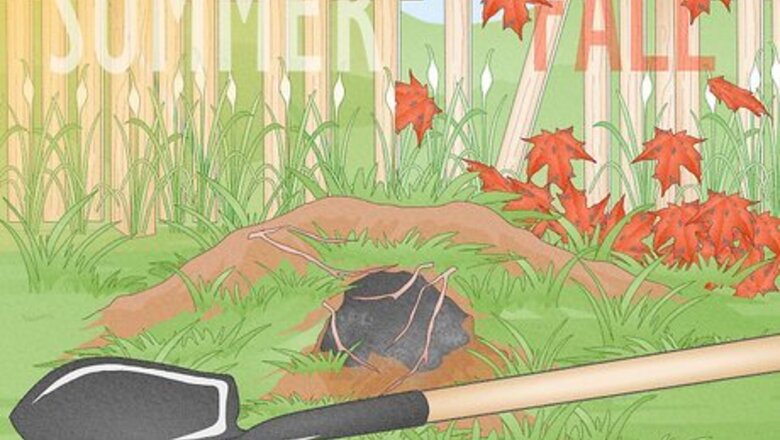
views
- Fill the groundhog holes with topsoil, sand, or gravel. Just make sure there aren’t any groundhogs trapped inside that could dig back out.
- Block the holes with large rocks or a panel of chicken wire so groundhogs don’t return to old burrows.
- Try flooding the tunnel with water to drive a groundhog out of hiding.
- Trap or kill the groundhog to get rid of it so it doesn’t start digging new tunnels or causing damage.
Filling Holes
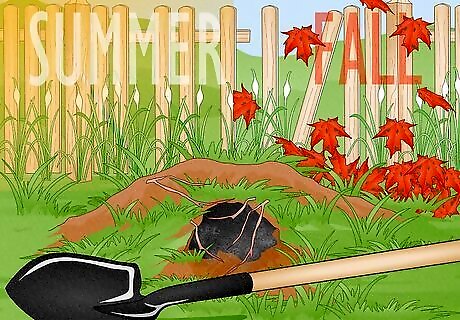
Plug holes in summer or early fall when burrows are empty. Wait until the summer or early fall to plug holes so you don’t trap any groundhogs that are hibernating or raising young. Then, plug the holes during the early morning or late afternoon when the groundhogs are most actively feeding outside. If a groundhog is still inside, it will dig a new tunnel to get back out and it could cause more damage than before.
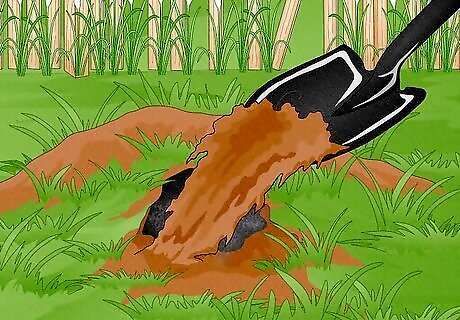
Backfill the holes with topsoil or sand. Shovel the loose dirt that’s already around the groundhog hole back into the tunnel. Be sure to tamp the soil to pack it down firmly. If there’s still a depression around the hole, pour in additional soil, sand, or a mixture of the two to fill it in completely. Spread grass seed over the patch of dirt to help regrow the spot in your lawn. If you want to hide the groundhog hole, cut a piece of sod slightly larger than the hole and press it down firmly onto the dirt.
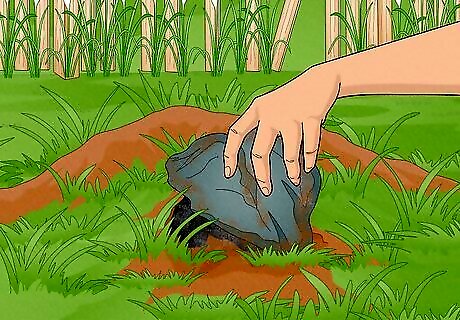
Put large rocks or gravel in the tunnel openings. Get some large landscaping stones that are about the size of the groundhog hole and push them into the opening to close it off. If you want to fill more of the groundhog tunnel, pour gravel into the hole and tamp it down with the back of a shovel or hoe. Keep adding gravel until it fills the hole completely. Groundhogs can’t dig through gravel as easily so they won’t be able to reopen the tunnel. You don't need to fill a groundhog hole with concrete, though (that's probably overkill).
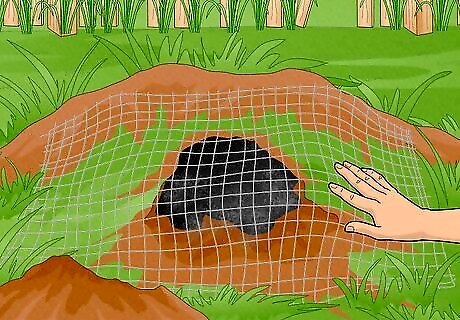
Cover the holes with a panel of chicken wire. Cut a 3 ft × 3 ft (0.91 m × 0.91 m) piece of chicken wire for each entrance hole. Center the chicken wire over the entrance hole and bury it under dirt, sand, or gravel to conceal it. That way, if the groundhog tries to come back, the wire will stop it from digging any further.
Getting Rid of Groundhogs
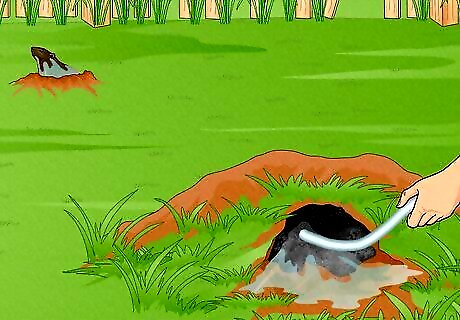
Flood the tunnel with water. Put the end of your garden hose into one of the entrance holes for the tunnel, and turn your water on. As water fills the tunnel, the groundhogs will leave the burrow so they don’t drown. Since groundhogs don’t like to live in a wet burrow, they’ll avoid going back inside and move on to someplace else. After you flood the hole, plug it with dirt, sand, or gravel to deter a groundhog from coming back.
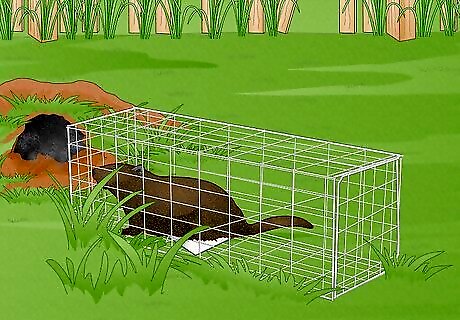
Try trapping and relocating the groundhog with a wire-mesh trap. Use a trap that’s at least 24 inches (61 cm) long and has a 9 in × 9 in (23 cm × 23 cm) opening. Set the trap up near the groundhog hole and camouflage the outside with sticks and leaves. When you trap a groundhog, move it somewhere about 5 miles (8.0 km) away. Use cantaloupe, sweet corn, or lettuce to attract groundhogs to the trap. Replace the bait every day or two so it stays fresh. If you don’t feel comfortable moving a groundhog on your own, call your local wildlife department to have someone relocate the groundhog for you.
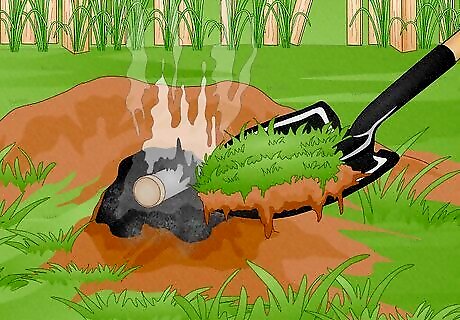
Fumigate groundhog tunnels with a gas cartridge. Cut pieces of sod that are just larger than the burrow entrances, and plug all the holes except the main entrance. Light the fuse on the gas cartridge and set it in the hole as far as it will go. Then, plug the main entrance with the piece of sod with the grass side face-down. The cartridge will fill the tunnel with carbon monoxide (which kills the groundhogs). Look for smoke coming out of the ground, which can indicate another entrance hole. Quickly cut another piece of sod and plug the hole as soon as you can. Fumigation is most effective in the spring when young groundhogs haven’t come out of their burrows yet. Avoid using gas cartridges if the groundhog tunnel goes underneath any sheds, buildings, or other flammable objects since they could potentially ignite. Avoid breathing the fumes since they can cause severe irritation.
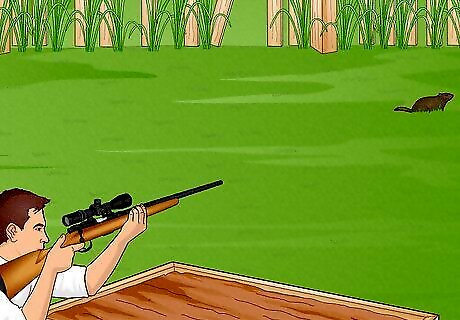
Shoot the groundhog if it’s legal in your area. Check the regulations in your area to see if you’re able to shoot a firearm on your property. Use a 0.22-caliber rifle for the most accuracy and to kill the groundhog the most humanely. Avoid shooting groundhogs if you live in a populated area; it might be illegal, and you could accidentally hurt someone.
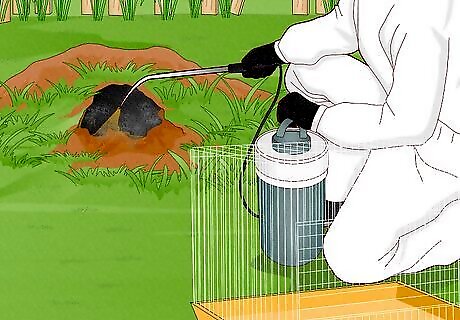
Contact a professional if you can’t remove the groundhog on your own. Reach out to your city’s department of wildlife to see what they recommend doing about the groundhog on your property. Alternatively, talk to an exterminator to kill the groundhog for you.
Deterring Groundhogs
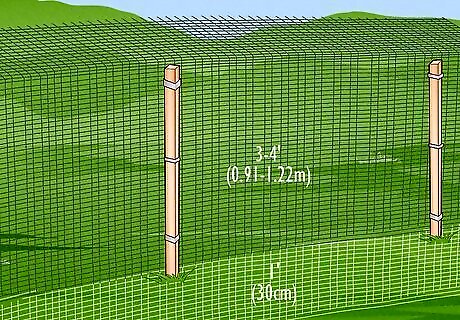
Install a fence around the area you want to protect. Use chicken wire with 2 in (5.1 cm) mesh to keep groundhogs from crawling through it. Put up your fence so it reaches 3–4 feet (0.91–1.22 m) off of the ground, and bend the top 15 inches (38 cm) outward at a 45-degree angle. To keep groundhogs from burrowing underneath, bury the bottom 1 foot (30 cm) of the fence underground. Bending the top of the fence helps prevent groundhogs from climbing over. Install an electric wire 4–5 inches (10–13 cm) out from the bottom corner to deter groundhogs even more.
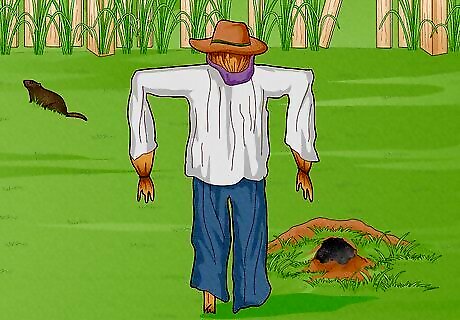
Put scarecrows up in your yard. Put the scarecrows near the entrance holes to help scare the groundhogs away. Change the position or location of the scarecrow every day or two, or else the groundhogs will realize they aren’t a real threat. You can also use a motion-detected deterrent that shoots water or makes a noise whenever it senses a groundhog nearby.
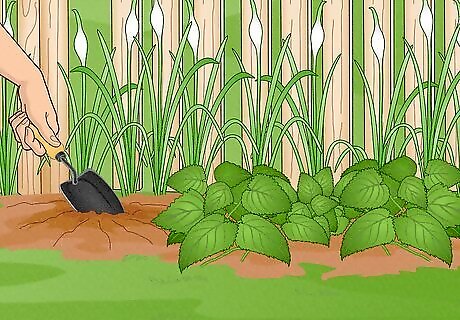
Grow strong-smelling herbs in your garden. If you’re looking for a natural way to get rid of groundhogs, try bordering your garden with mint, sage, basil, rosemary, thyme, chives, or oregano. Since these herbs irritate a groundhog’s nose, it will try to avoid the area. You can also try leaving rags soaked in ammonia or castor oil since they have strong scents that groundhogs hate.
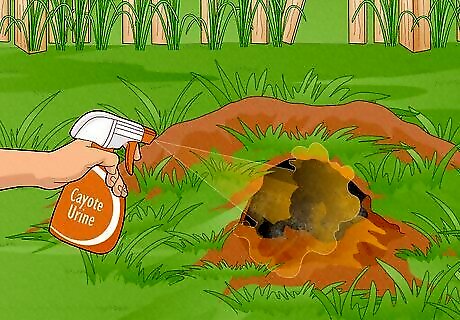
Try applying a predator urine deterrent to scare groundhogs away. Try bobcat or coyote urine since they are a groundhog's natural predators. Spread the deterrent around the perimeter of your yard or garden once a month to keep the groundhogs out of the area. You can also try using dried blood meal as a deterrent.
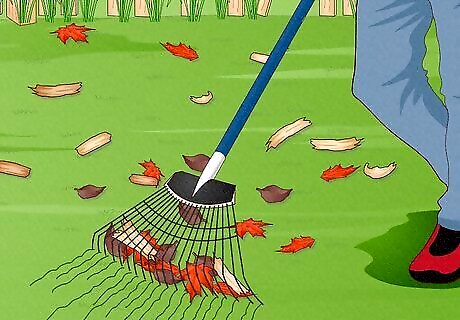
Remove clutter from your yard. Clean up any leave piles, branches, or other debris that you have in your yard since that might attract groundhogs looking for a place to nest. Trim your shrubs and trees so they’re not overgrown as well since they’re perfect hiding spots for groundhogs.















Comments
0 comment